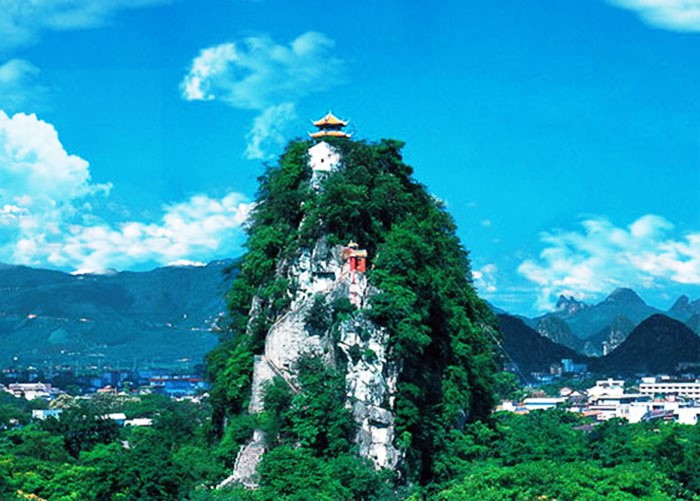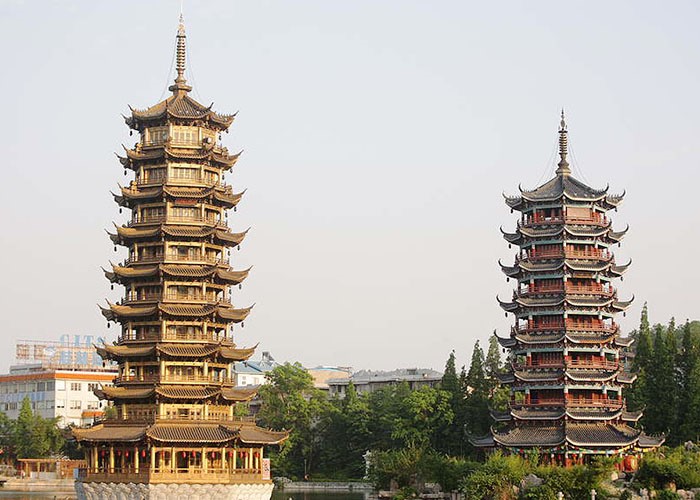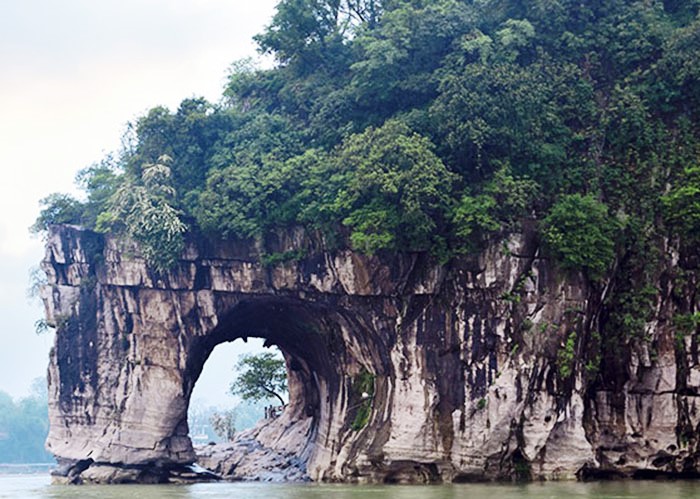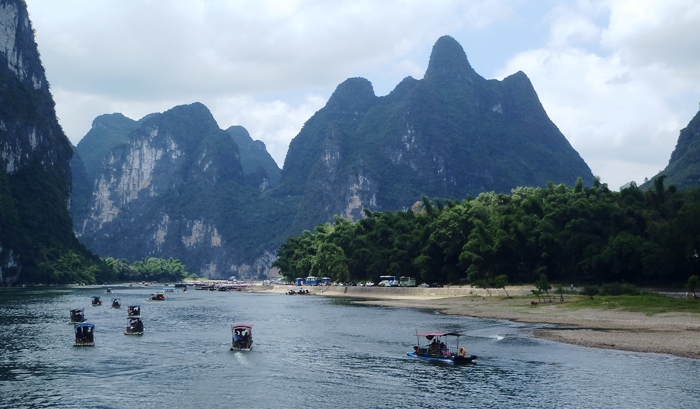Guilin – a picturesque town that smells of cinnamon, in China’s Guanxi Province, is far removed from the chaos of Beijing or Shanghai and the old-world landscapes of Xi’an or Chengdu. Here, four wonders rule – clear waters, caves, green hills and beautiful stones. Everything else is secondary. Food is great and so are the people and it is not surprising that of all the places in China, expats choose to live here, in this city.
History of Guilin
Guilin stands for “cassia forest” or cinnamon, a name that stuck from the Qin dynasty (221–206 BCE) when cinnamon (“gui” in Chinese) was planted throughout the area. A faint smell of cinnamon always lingers in the air and during the blossom season, it is magical to stroll down streets fanned by the gentle smells of spices.
Did you know that the mountain ranges that you see when cruising down River Li is on the 20 Yuan bill?
Here are FIVE reasons why you should be packing your bags and heading to Guilin.
Reed Flute Cave
The city’s top draw, the Reed Flute Cave is believed to be over 180 million years old. A natural limestone cave with multicolored lighting, this cave has been awing people for over a thousand years. Reed Flute Cave is filled with a large number of stalactites, stalagmites and other rock formations not to mention inscriptions dating as far back as 792 AD. For a long time in history, the cave remained out of sight until it was rediscovered in the 1940s by a group of refugees fleeing the Japanese troops.

Solitary Beauty Peak
One of Guilin’s top rated tourist spot, this solitary peak has been enticing visitors from all around the world. The peak stands alone, interlaced with other mountains around it. The views from the top are stunning. As you go up, you’ll see plenty of tablet and carvings with some information on it. It is said that this peak has been popular (as can be seen from the inscriptions dating as far back as 420 – Song Dynasty). A famous Chinese poet Yan Yanyuan once wrote the following poem: “The beauty of the peak is so unique that other nearby mountains is not on the par with it.”
It’s a sharp walk to the top, but well worth the effort.


Pagodas of Gulin are legendary
It is impossible to separate Pagodas from China – and that goes for every city in this country. Guilin also has two very famous Pagodas – The Sun and the Moon Pagoda that stand in the waters of Fir Lake. The name sun and moon pagoda from the lights at night. Also, the Sun pagoda is the highest bronze pagoda in the world. You can ride the elevator to the top. The pagodas, however are a lesson in culture, art, religion, and architecture, technology, and natural landscape.

Elephant Trunk Hill
At first glance it looks as though an elephant is drinking water but it just a rock shaped like one. This is also the symbol of Guilin and a popular spot for visitors. Elephant Hill, is located at the confluence of the Li River and Peach Blossom River. There are several different versions of history or mythology which have contributed to the local stories about the naming of this piece of beauty.

Cruise on River Li
To begin with, a typical cruise on River Li lasts 4 hours (one way to Yangshou). But rest assured, there is not a moment of boredom on board. Plenty of activities happening on the river as you cruise through some mind-boggling karst landscape. Not surprising that this cruise is the highlight of any trip to northeastern Guanxi. Your meals are served on board – a word of advice here: – Queue up early for food and fill up as much as you’d like at one go. The boats get crowded very quickly and food disappears faster than the next mountain around the river bends!









[…] of my highlights of visiting China was a visit to the Chendgu Research Base for Pandas – although I did not get a chance to […]
Tickled by this Anjaly as Lonely Planet doesn’t give it a good wrap up at all! We are there in a few weeks.
[…] (While you are imagining it, here is a fun fact about a cinnamon town in China? Any guesses? Guilin! […]